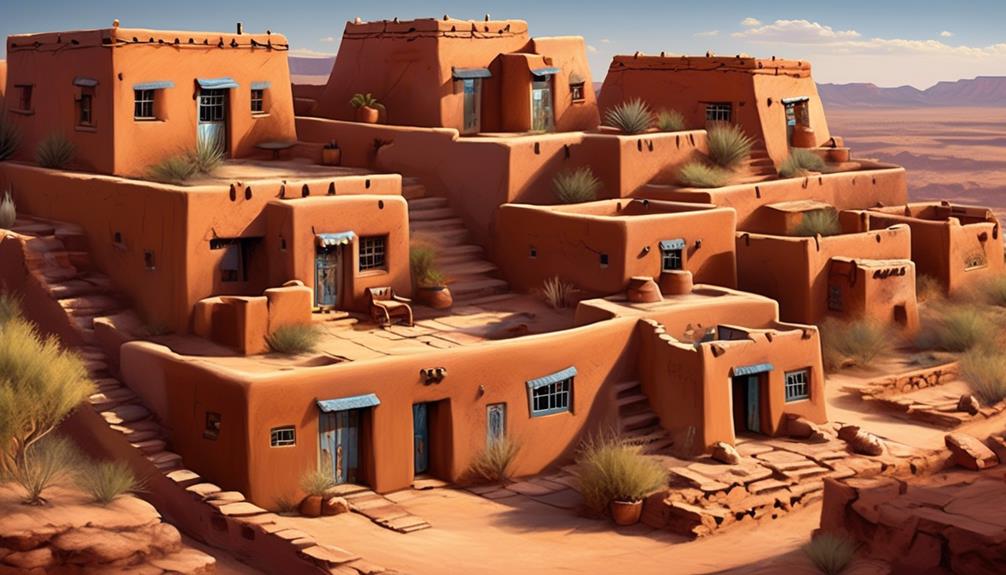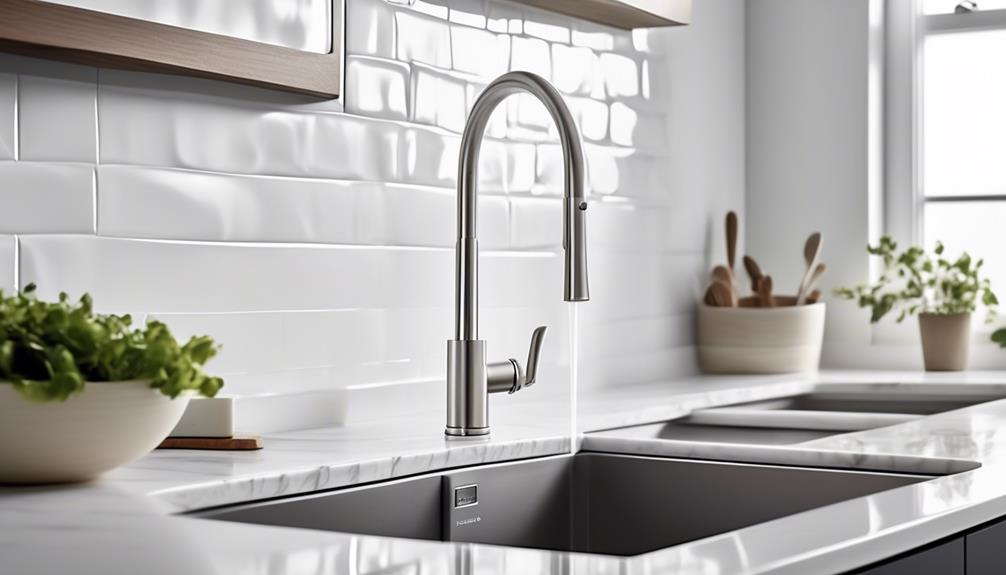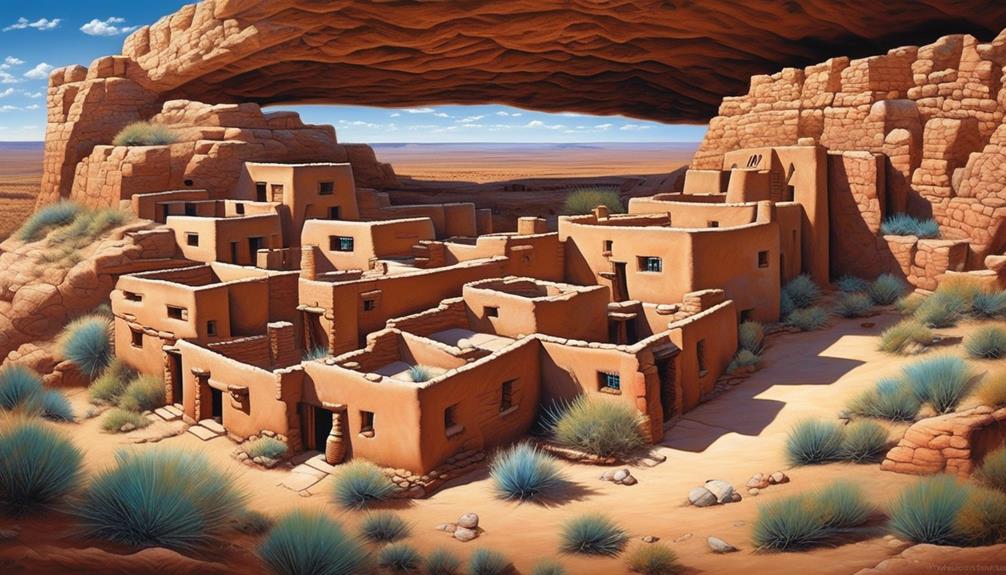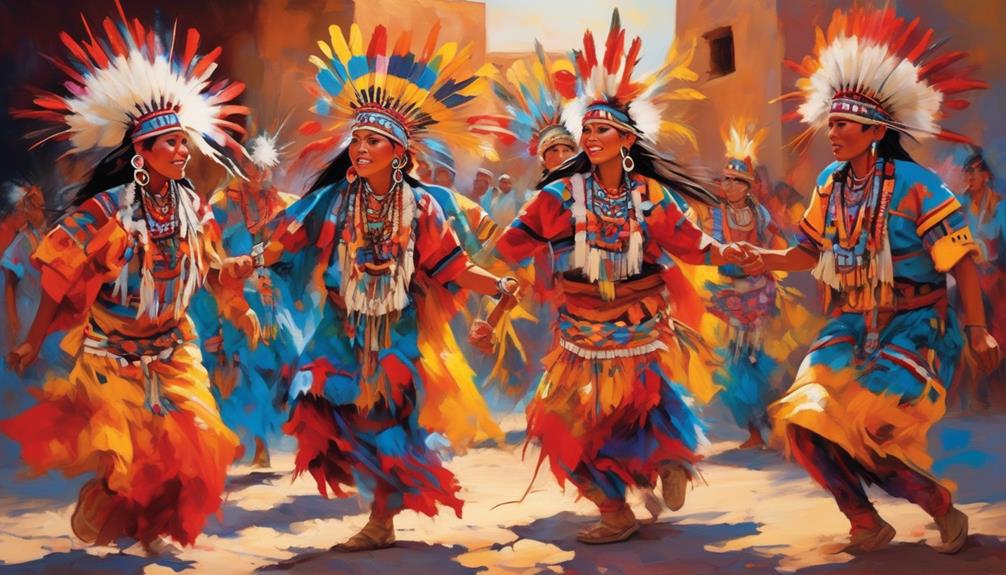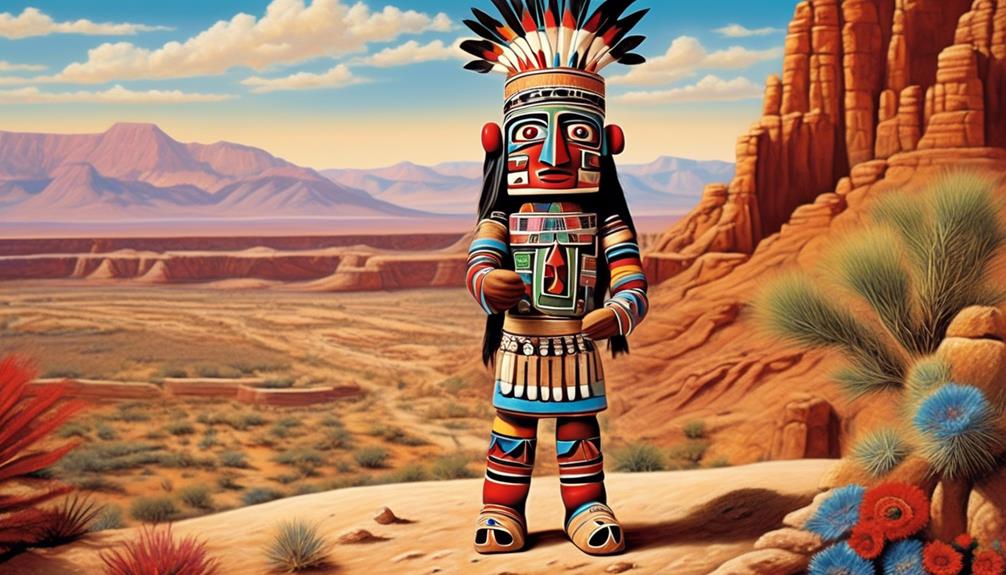When it comes to traditional homes, we often think of structures that have been modernized to suit contemporary living. But the dwellings of the Hopi tribe challenge this assumption by not only surviving for generations but also holding deep cultural and spiritual significance.
The way in which the Hopi tribe constructs their homes offers a unique insight into the values and traditions that have been preserved for generations. Stay tuned to learn about the fascinating and enduring architecture of the Hopi tribe and the role it plays in their lives today.
Key Takeaways
- Hopi tribe homes are constructed using traditional materials such as adobe, sandstone, and timbers sourced locally.
- The construction techniques used in Hopi homes have been passed down through generations, reflecting a sustainable building approach that minimizes ecological impact.
- Pueblo architecture integrates cultural symbolism with practical design, creating homes that harmonize with the desert landscape and promote social interaction through the layout of homes around plazas or courtyards.
- Kivas, sacred ceremonial spaces within Hopi homes, play a crucial role in preserving Hopi traditions, fostering community bonding, and symbolizing the continuity of cultural practices.
Traditional Construction Methods
The Hopi tribe has employed traditional construction methods for centuries, utilizing locally-sourced materials and time-tested techniques to build their distinctive homes. Sustainable building is at the core of the Hopi tribe's construction practices. The homes are constructed using adobe, sandstone, and timbers, all sourced from the local environment, ensuring minimal ecological impact. The indigenous craftsmanship employed in the construction of these homes is a testament to the Hopi people's deep understanding of their natural surroundings. The techniques used have been passed down through generations, preserving the tribe's rich architectural heritage.
Comparatively, the sustainable building methods of the Hopi tribe showcase a deep respect for the environment, a stark contrast to modern construction practices. While modern construction often relies on manufactured materials and heavy machinery, the Hopi tribe continues to utilize indigenous craftsmanship, demonstrating an intimate knowledge of their land and resources. This historical approach to construction not only creates homes that blend seamlessly into the natural landscape but also ensures minimal environmental disruption, a lesson that holds great significance in today's world.
Significance of Pueblo Architecture
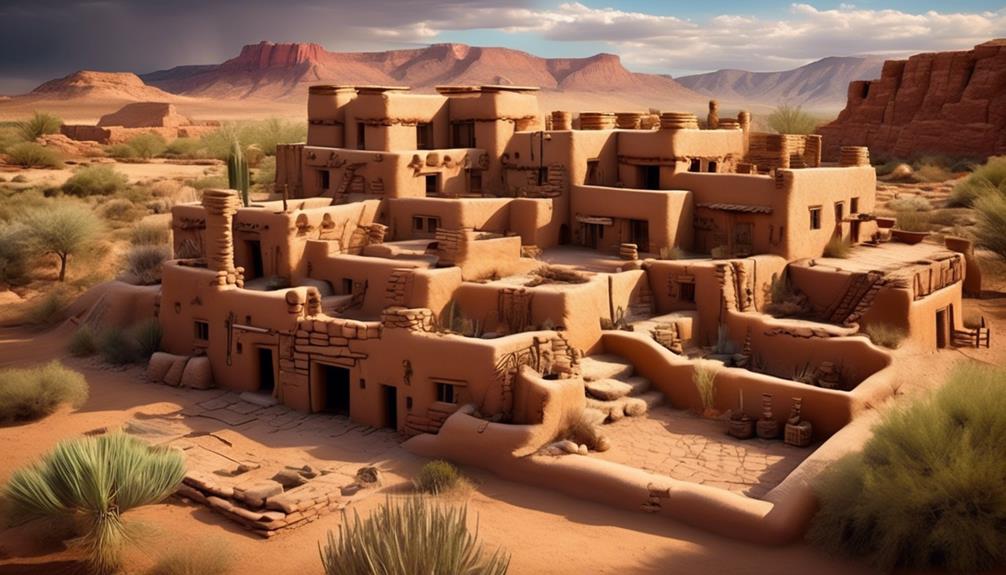
Evolving from centuries-old traditions, Pueblo architecture uniquely integrates cultural symbolism with practical design, reflecting the deep-rooted connection of the Hopi people to their ancestral lands. The architectural evolution of Pueblo homes mirrors the Hopi tribe's commitment to cultural preservation. The buildings aren't only dwellings but also living artifacts, embodying the tribe's values, beliefs, and history.
The sustainability of Pueblo architecture is remarkable, utilizing locally-sourced materials and natural elements for insulation, ensuring minimal environmental impact. The structures are designed to harmonize with the desert landscape, blending seamlessly with the earth-toned surroundings.
Pueblo architecture fosters community life, with homes often grouped around plazas or courtyards, promoting social interaction and communal activities. These spaces serve as centers for ceremonies, celebrations, and collective decision-making, reinforcing the interconnectedness of the community. The layout of the buildings also reflects the Hopi's spiritual beliefs, with specific orientations and symbolic elements incorporated into the design.
Pueblo architecture stands as a testament to the enduring legacy of the Hopi people, encapsulating their traditions, sustainability practices, and the significance of community in their daily lives.
Role of Kivas in Hopi Homes
Nestled within the heart of Hopi homes, kivas serve as sacred ceremonial spaces, embodying the spiritual essence of the community. These subterranean chambers play a pivotal role in the cultural ceremonies and community gatherings of the Hopi tribe. The significance of kivas in Hopi homes is deeply rooted in tradition, history, and spirituality.
| Role of Kivas in Hopi Homes | Description |
|---|---|
| Cultural Ceremonies | Kivas are integral to the preservation of Hopi traditions, providing a sacred setting for important cultural ceremonies. |
| Community Gatherings | Kivas serve as a focal point for community gatherings, fostering a sense of unity and shared spiritual experiences. |
| Historical Significance | Historically, kivas have been central to the Hopi way of life, symbolizing the tribe's deep connection to the land and their ancestors. |
Kivas are where the Hopi people come together to honor their heritage, connect with their spirituality, and partake in rituals that have been passed down through generations. These spaces hold a profound significance, serving as a link between the past, present, and future of the Hopi tribe. The role of kivas in Hopi homes goes beyond mere physical structures; they are the heartbeat of the community, pulsating with the rhythms of tradition and spirituality.
Spiritual and Cultural Importance
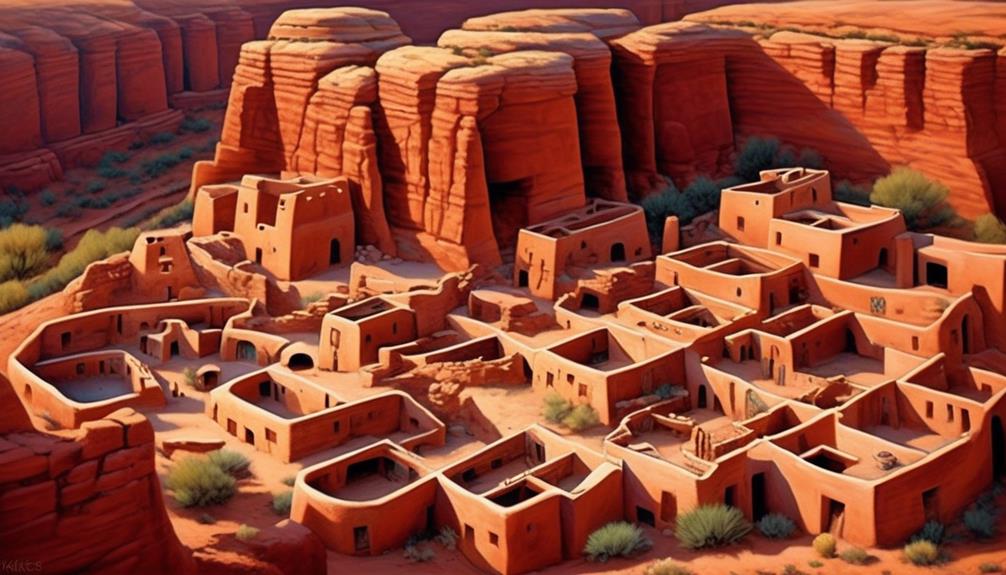
Exemplifying the enduring spiritual and cultural significance within Hopi homes, the kivas stand as revered spaces where past traditions and present connections converge. These subterranean chambers hold profound spiritual importance for the Hopi people, serving as the focal point for various spiritual practices and ceremonies. The kivas are integral to cultural preservation, providing a physical space where ancient rituals and beliefs are perpetuated and passed down through generations.
- Sacred Ceremonies: Kivas serve as the sacred venues for ceremonies such as the Kachina dances, where the Hopi people express their religious beliefs and cultural identity.
- Interconnectedness: Within the kivas, the interconnectedness of the Hopi people with their ancestors and the natural world is palpable, reinforcing the deeply ingrained cultural and spiritual connections.
- Cultural Continuity: The kivas symbolize the continuity of cultural practices, ensuring that the spiritual heritage of the Hopi tribe remains vibrant and alive.
- Community Bonding: These spaces foster strong community bonds, as they're the setting for communal decision-making, storytelling, and the passing on of oral traditions.
- Cosmic Alignment: Kivas are designed with precise astronomical alignment, reflecting the Hopi's profound connection to the cosmos and the natural world.
Adaptation to Modern Times
Adapting to the challenges of modern times, Hopi tribe homes have undergone transformations while striving to maintain their cultural and spiritual integrity.
The modern changes in the Hopi tribe homes are evident in the architectural evolution that has taken place over the years. While traditional adobe dwellings are still prevalent, modern materials and construction techniques have influenced the way new homes are built. The incorporation of amenities such as electricity, running water, and heating systems reflects the adaptation to contemporary living standards. Despite these modernizations, the Hopi people have remained steadfast in preserving the sacred symbolism and spiritual significance embedded in their homes.
Comparatively, the architectural evolution has resulted in a blend of traditional and modern elements, showcasing a harmonious coexistence of the past and present. This adaptation has allowed the tribe to embrace the conveniences of modern living without compromising their deep-rooted cultural values.
The homes continue to serve as not only physical shelters but also as embodiments of the Hopi tribe's enduring connection to their ancestral heritage. As the Hopi people navigate the complexities of modern times, their homes stand as testaments to their resilience and commitment to preserving their unique way of life.
Frequently Asked Questions
What Are the Specific Materials Used in Traditional Hopi Home Construction?
In traditional Hopi home construction, specific materials such as adobe, stone, and wood are used to create sustainable and culturally significant architectural structures. These materials have been utilized for centuries, showcasing the Hopi tribe's deep connection to their ancestral ways of building.
The traditional homes reflect the tribe's values and respect for the environment, fostering a harmonious relationship with the natural world.
How Do Hopi Homes Incorporate Natural Elements Into Their Design?
Incorporating nature into their design, Hopi homes utilize traditional techniques to blend seamlessly with the environment. Natural elements like adobe and stone are skillfully integrated, reflecting the tribe's deep connection to the land.
The homes are built to withstand the elements while maintaining harmony with nature. This approach, passed down through generations, showcases the Hopi's respect for the earth and their commitment to sustainable living.
Are There Any Specific Rituals or Ceremonies Associated With the Construction of Hopi Homes?
Yes, there are specific rituals and ceremonies associated with the construction of Hopi homes.
Ceremonial practices hold deep cultural significance for the Hopi tribe, and home construction is no exception.
The process is steeped in tradition, with rituals that honor the connection between the people, the land, and their ancestors.
These ceremonies are integral to preserving the tribe's cultural heritage and maintaining a spiritual connection to the earth.
What Is the Significance of the Placement and Orientation of Hopi Homes Within Their Communities?
The significance of the placement and orientation of Hopi homes within their communities lies in their deep cultural traditions.
The community placement ensures a sense of togetherness and interconnectedness, reflecting the values of unity and shared responsibility.
Additionally, the orientation of the homes holds spiritual importance, aligning with the Hopi belief system and the natural world.
These practices have been passed down through generations, embodying the enduring traditions of the Hopi Tribe.
How Have Modern Technologies and Materials Influenced the Construction of Contemporary Hopi Homes?
Modern innovations have greatly influenced the construction of contemporary Hopi homes. Sustainable architecture, renewable resources, and energy-efficient design are now key considerations. Our homes now incorporate modern materials and technologies to ensure they're both environmentally friendly and suited to our modern lifestyle.
The integration of these modern elements with traditional building methods has allowed us to preserve our heritage while adapting to the changing world.
Conclusion
In conclusion, the Hopi tribe homes are like the sturdy roots of a ancient tree, deeply connected to their cultural and spiritual heritage.
The traditional construction methods and significance of Pueblo architecture have shaped their unique dwellings, while the role of kivas remains central to their everyday life.
As the Hopi people adapt to modern times, their homes continue to stand as a testament to their enduring traditions and values.
